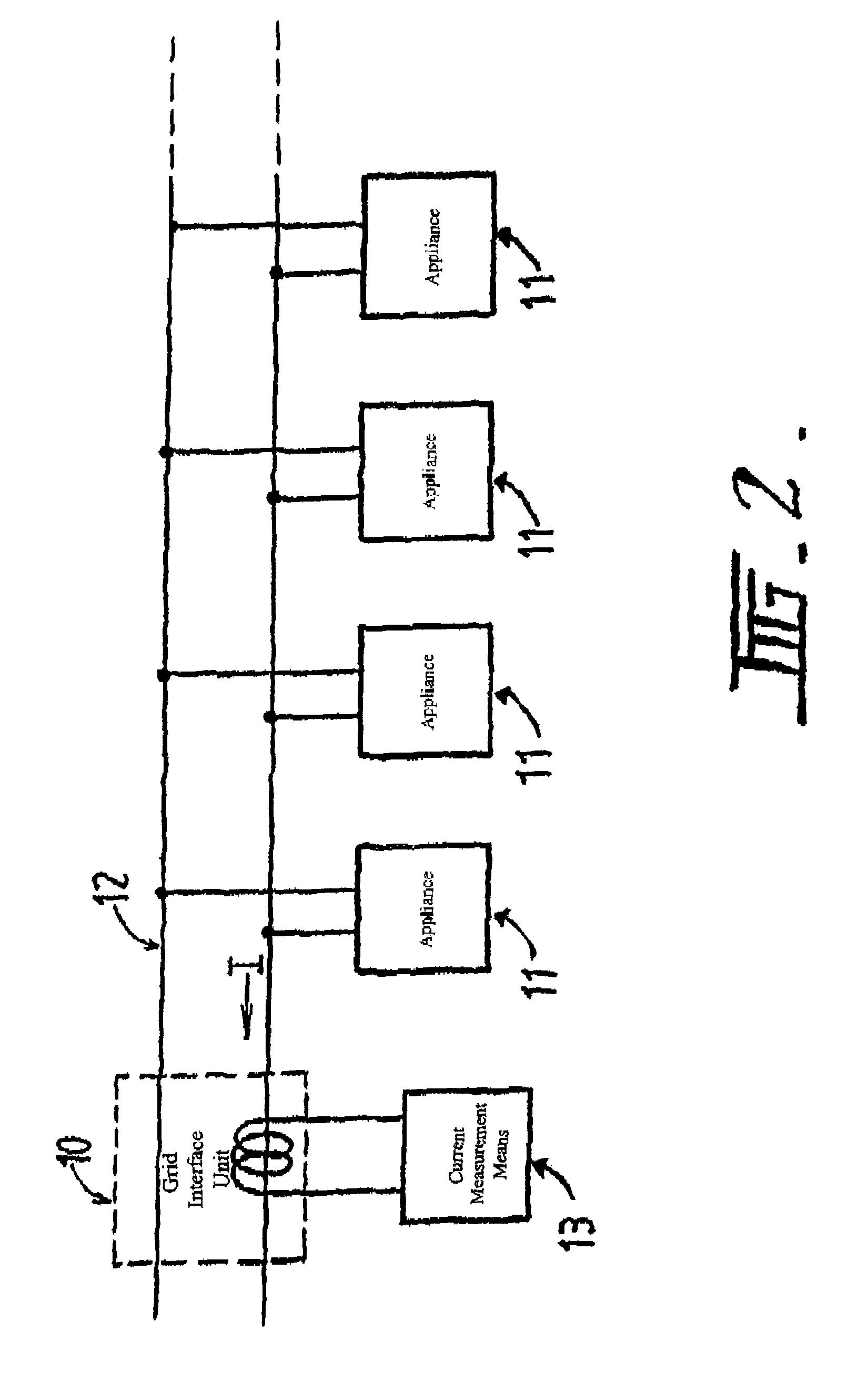Power line communications method
a power line and communication method technology, applied in the field of powerline communications, can solve the problems of high cost of such modems, high speed and high cost of power line modems, and the inability to meet the needs of data switching details,
- Summary
- Abstract
- Description
- Claims
- Application Information
AI Technical Summary
Benefits of technology
Problems solved by technology
Method used
Image
Examples
Embodiment Construction
[0029]FIG. 1 illustrates an embodiment of the invention in which a grid interface unit 10 is operable to communicate with a plurality of appliances 11 over power line 12. Communications between the grid interface unit 10 and the appliances 11 are conducted in accordance with the communications protocol of the second aspect of the present invention. During the first mode of operation, on-line communications are conducted in a single direction, from the appliances 11 to the grid interface unit 10, by modulation of a current component of a power signal passed between the grid interface unit 10 and the appliances 11. Hence, during the first mode of operation, there is provided a simplex (one-way) channel from the appliances to the grid interface unit.
[0030]As can be seen, the present invention is of particular advantage where it is desired to monitor one or more appliances, particularly as the monitoring can be performed by a pre-existing component in the power system, namely the GIU 10...
PUM
 Login to View More
Login to View More Abstract
Description
Claims
Application Information
 Login to View More
Login to View More - R&D
- Intellectual Property
- Life Sciences
- Materials
- Tech Scout
- Unparalleled Data Quality
- Higher Quality Content
- 60% Fewer Hallucinations
Browse by: Latest US Patents, China's latest patents, Technical Efficacy Thesaurus, Application Domain, Technology Topic, Popular Technical Reports.
© 2025 PatSnap. All rights reserved.Legal|Privacy policy|Modern Slavery Act Transparency Statement|Sitemap|About US| Contact US: help@patsnap.com



